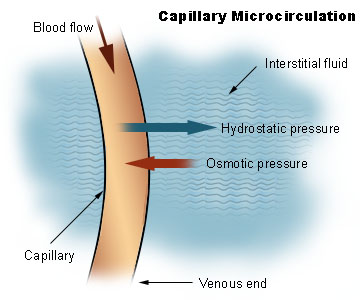Microcirculation

|
WikiDoc Resources for Microcirculation |
|
Articles |
|---|
|
Most recent articles on Microcirculation Most cited articles on Microcirculation |
|
Media |
|
Powerpoint slides on Microcirculation |
|
Evidence Based Medicine |
|
Clinical Trials |
|
Ongoing Trials on Microcirculation at Clinical Trials.gov Trial results on Microcirculation Clinical Trials on Microcirculation at Google
|
|
Guidelines / Policies / Govt |
|
US National Guidelines Clearinghouse on Microcirculation NICE Guidance on Microcirculation
|
|
Books |
|
News |
|
Commentary |
|
Definitions |
|
Patient Resources / Community |
|
Patient resources on Microcirculation Discussion groups on Microcirculation Patient Handouts on Microcirculation Directions to Hospitals Treating Microcirculation Risk calculators and risk factors for Microcirculation
|
|
Healthcare Provider Resources |
|
Causes & Risk Factors for Microcirculation |
|
Continuing Medical Education (CME) |
|
International |
|
|
|
Business |
|
Experimental / Informatics |
Editor-In-Chief: C. Michael Gibson, M.S., M.D. [1]; Assistant Editor(s)-in-Chief: Rim Halaby
Overview
- The microcirculation is the blood flow through blood vessels smaller than 100 µm (i.e. arterioles, capillaries, and venules), this contrasts with macrocirculation, which transports blood to and from the organs.
- The main functions of the microcirculation are transporting blood cells and substances to/from the tissues, and acting as body coolant in thermoregulation processes.
- It also contributes to tissues color and stiffness.
- Diffusion is the capillary exchange of substances across the endothelial cells membranes.
The Components of the Microcirculation
- The vessels on the arterial side of the microcirculation are called the arterioles, which are well innervated, are surrounded by smooth muscle cells, and are 10-100 µm in diameter.
- Arterioles carry the blood to the capillaries, which are not innervated, have no smooth muscle, and are about 5-8 µm in diameter.
- Blood flows out of the capillaries into the venules, which have little smooth muscle and are 10-200 µm. The blood flows from venules into the veins.
- In addition to these blood vessels, the microcirculation also includes lymphatic capillaries and collecting ducts.
Determinants of Capillary Exchange
- 1- Surface area of the capillary bed
- It is dependent on the metabolic activity of the tissue.
- 2- Permeability of the capillary bed
- 3- Free diffusion coefficient of the solutes to be exchanged
- It is dependent on the solutes size, charge and lipid solubility.
- 4- Concentration of the solutes to be exchanged
- The difference in concentration of the solutes in the blood and in the interstitium drives the flow of substances across the capillary bed.[1]
Starling's Law
- The Starling equation is an equation that illustrates the role of hydrostatic and oncotic forces (the so-called Starling forces) in the movement of fluid across capillary membranes.
- According to Starling's equation, the movement of fluid depends on six variables:
- Capillary hydrostatic pressure ( Pc )
- Interstitial hydrostatic pressure ( Pi )
- Capillary oncotic pressure ( πc )
- Interstitial oncotic pressure ( πi )
- Filtration coefficient ( Kf )
- Reflection coefficient ( σ )
- Starling's equation reads as follows:
Transvascular Exchange of Water
- Water moves across the capillary walls based on the same principles of Starling's law and thus it depends on the difference of hydrostatic pressures and oncotic pressures in the blood vessels and in the interstitium.
- Filtration is the movement of water out of the vessels
- Reabsorption is the movement of water in the vessels.
References
- ↑ Hoit BD, Walsh RA. Chapter 5. Normal Physiology of the Cardiovascular System. In: Fuster V, Walsh RA, Harrington RA, eds. Hurst's The Heart. 13th ed. New York: McGraw-Hill; 2011.